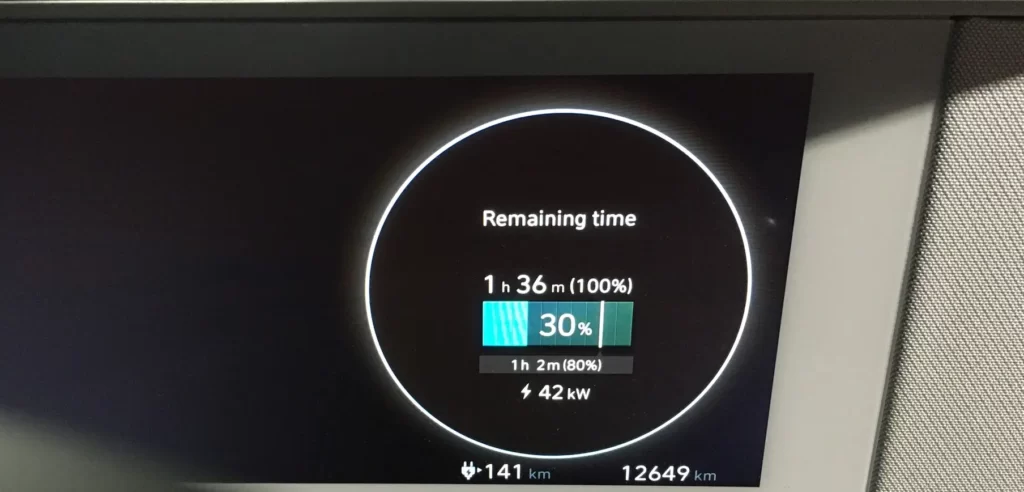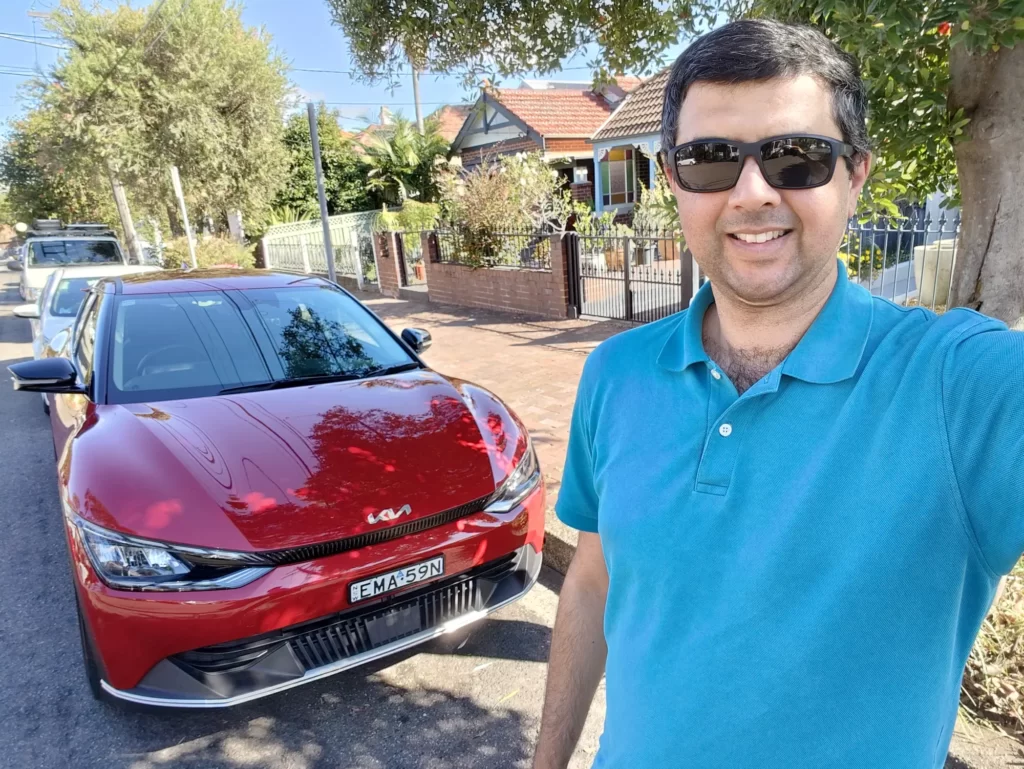During Q3 and Q4 2023 Australian EV owners found that although Tesla just opened 30 Supercharger locations to Non-Tesla EVs in Australia, they aren’t as useful as expected because:
- charging speeds at 250kW sites are much lower than their car is capable of
- the short Supercharger cables combined with back right charge port location makes it hard to park without inconveniencing others
The very slow 42kW charging rate has now been fixed, details are in my article about Tesla V3 AUS & UK Superchargers being fixed for E-GMP charging.

Australian owners of Hyundai Ioniq 5, Ioniq 6 and Kia EV6 electric cars which are all based on the E-GMP 800V platform capable of charging at up to 235kW rate, have discovered that their cars can only charge at:
- Very slow 42kW rate on 250kW Tesla V3 Superchargers
- 90-100kW charge rate on a Tesla V2 Supercharger, which is OK considering these are 120kW max rate.
I asked Kia Australia for a comment and their spokesperson told me:
“From the point of view of Kia Australia, there is no reason why HQ R&D would limit our system to 42kW when using a Tesla V3 or V4 Supercharger”.
“As per the article, Kia vehicles are achieving 90-100kW charge rate on the older Tesla V2 Superchargers”.
“This suggests the limitation and opportunity for improvement, falls with Tesla”.
Australian Ioniq 5 owner Peter Campbell said I could quote his experience:
“I just tried charging my Hyundai Ioniq 5 the one Tesla DC charger site that is open in the ACT in Tuggeranong. It has relatively recently installed 250kW chargers”.
“The first thing I wanted to test was whether I could get the cable to reach the charge port on the rear right of the HI5 when parked in the intended space for the particular charger. It wouldn’t reach, even when parking as close to the charger and as skewed as I could manage without blocking any other charging space. The site was not fully occupied so I was not holding anyone up when I then took the cable intended for the adjacent space”.
“The main thing I wanted to test is what charge rate I would get. The Ioniq 5 uses the e-GMP platform, which uses the 800V charging system. It achieves compatibility with the 400V charging system by doing an on-board DC-DC voltage conversion, in this case, up to about 700V for the Ioniq 5 battery”.
“To do this needs a substantial inductor and the e-GMP platform does this cleverly by repurposing the rear motor coil rather than adding extra hardware. This arrangement presumably has some maximum power limit. I have seen 105kW claimed to be the limit but I have not found an authoritative source for that. I had also seen multiple reports of people only getting 42kW from Tesla DC chargers”.
“I did indeed also get a steady 42kW, which was a bit underwhelming for a 250kW charger. I was at 30% state of charge to ensure that the charge rate would not be limited by having a too-full battery. On 800V chargers, I have seen 235kW with my car. Since I got exactly 42kW and others also report exactly 42kW, it seems this really is a hard limit”.
“It looks like the consensus is that up to 100kW or so is possible on the older, lower powered Tesla V2 DC chargers but only 42kW on the newer higher powered V3 chargers.”
Unfortunately Tesla’s brand new V4 Supercharger which is not available yet in Australia is no better. A European tester (video above) found out his Kia EV6 only charged at 42kW rate with a V4 Supercharger vs slightly less than 100kW at a V2 Supercharger. An American journalist got the same 42kW rate with a Kia EV6 at a Tesla Supercharger.


As a side note I have tested both the Hyundai Ioniq 5 and Kia EV6 this year, they are my current favourite EV’s in the 70-100K price range.
Also I have personally seen my Ioniq 5 test car charge at the promised top speed as you can see in my video below. Charging other EV’s afterwards feels sooooo slow in comparison.

Leave a Reply